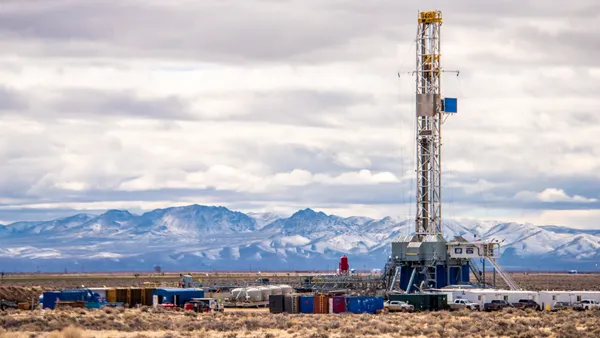Dive Brief:
- Allianz, a Germany-based life insurance and financial services company, announced Monday it had created a new dashboard to track the emissions reductions and investments required for countries to achieve the net-zero commitments they made in the 2015 Paris Climate Agreement.
- Allianz’s Sector Assessment of Multiple Emissions pathways dashboard, or SAMEpath, is a free, open source tool that includes both sector- and region-specific data that will allow users to explore transition risks in different companies, sectors and climate scenarios.
- Allianz SE’s Chief Economist Ludovic Subran said the dashboard will be a “living tool” and includes a risk assessment portion, allowing users to examine transition risks under scenarios including limiting global temperature rises to below 1.5°C, remaining below 2°C and the overshoot scenario the world is currently on track for.
Dive Insight:
Allianz, the world’s largest insurer, said the tool was developed given the shrinking timeline to reach the goal of net-zero greenhouse gas emissions by 2050 and outlines the transition path for over 50 industries.
Subran said SAMEpath will help simplify and combine the data from the ever-growing number of climate scenarios and models.
“After the Paris Agreement, the thinking was that the world needed a simple Google Maps-like tool to orient us on reducing greenhouse gasses,” Subran said. “Unfortunately, there is an almost unmanageable number of models and scenarios now.”
The tool will allow users to run customizable data searches on different variables, regions and scenarios. SAMEpath also lets users simulate their own custom climate policies and analyze their impacts.
The dashboard also includes the ability to visualize the association between emissions reductions — either overall or in a singular industry — and the carbon price required to reach those reductions.
Allianz launched its first net-zero transition plan last year, with an aim of halving its greenhouse gas emissions by 2030. The firm also set intermediate targets to reduce carbon emissions 30% for its retail motor segments and reduce its greenhouse gas emissions intensity of its commercial insurance sector by 45% by the end of the decade.
The past year has given way to various climate science indicators that the globe is far off track from achieving the goals set out in the Paris agreement, and the U.S. is not exempt from that analysis.
The nation’s Fifth National Climate Assessment found its current climate adaptation moves are “insufficient” to reduce climate related risk or reach climate targets. Last month, the Rhodium Group estimated that, despite U.S. emissions dropping in 2023, U.S. emissions reduction rates need to triple and then sustain that elevated pace through the end of the decade to reach its 2030 goals.










